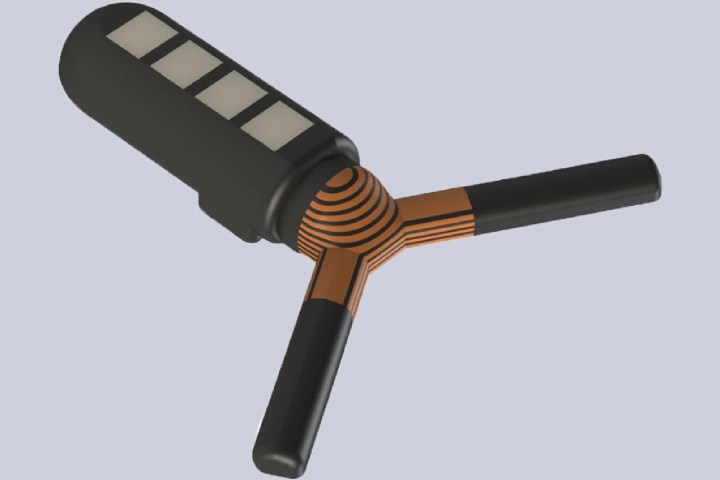
With a few minor modifications, the experience of taking medication in either tablet or capsule form has stayed pretty much the same for more than 100 years. Things may be starting to change, however. Researchers at Massachusetts Institute of Technology, Draper, and Brigham and Women’s Hospital have developed a cutting-edge 3D-printed capsule controlled using Bluetooth technology. The capsule is designed to be ingested by a patient, after which it can transmit and receive information to and from the outside world. It can also be instructed to gradually release drugs over an extended period of time in response to symptoms.
The researchers demonstrated their next-generation drug capsule in a pig animal model. Through Bluetooth, the tiny Y-shaped capsule communicated the core body temperature of the pig and was triggered to carry out timed drug release.
“We see this system as one capable of serving as a platform for mobile health applications,” Giovanni Traverso, a visiting scientist in MIT’s Department of Mechanical Engineering, who officially joins the campus next year, told Digital Trends.
Traverso gave two illustrations of how an ingestible capsule such as this might be used. In one scenario, it could monitor a person’s core body temperature over multiple weeks, looking for signs of hypothermia (an unusually cold body temperature) or hyperthermia (an unusually high body temperature). In the event that this was discovered, it could then release a drug intended to aid in early intervention. In another scenario, it could be used to carry out temperature monitoring in patients at high risk of infection, such as those with heavily immunosuppressed immune systems.
The researchers plan to continue their research by developing a broader set of sensor systems, capable of measuring more than just core body temperature. In previous work, the team designed sensors able to detect vital signs including heart rate and breathing rate. Traverso said that clinical trials are planned for human subjects, although these are likely a few years away. “We aim to translate these technologies into human applications over the coming three to five years,” he said.
MIT is not the only group interested in similar technologies. In Australia, researchers have been working to develop ingestible sensors, designed to monitor gas biomarkers in the gut and transmit this data to mobile devices. While not quite ready for prime time, these smart capsules have already been put through a phase 1 trial on 26 healthy individuals to show their safety and efficacy.
It seems that this kind of science-fiction-sounding technology may not be quite so far off as we once thought!
Editors' Recommendations
- Apple’s smart glasses could feature futuristic projection tech
- Finally, you can use a Google Nest smart speaker or display to find an iPhone
- Your A.I. smart assistant could one day tell if you’re lonely
- Post lockdown, smart cameras could help enforce mask use and social distancing
- UPS and CVS will use drones to deliver prescription drugs


